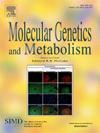Hearing rehabilitation in SERAC1 related MEGD(H)EL syndrome – implications from a multi-center retrospective cohort study
IF 3.5
2区 生物学
Q2 ENDOCRINOLOGY & METABOLISM
引用次数: 0
Abstract
Objective
3-methylglutaconic aciduria (MEG), dystonia-deafness (D), (hepatopathy (H)), encephalopathy (E), and Leigh-like-syndrome (L) (MEGD(H)EL) syndrome is a rare, severely disabling progressive mitochondrial disease associated with biallelic pathogenic variants in SERAC1. Knowledge about hearing loss (HL) and hearing rehabilitation is scarce but highly sought after for best possible care in the absence of causative treatment.
Methods
Retrospective cross-sectional study.
Results
This study analyzed the audiometric data of 36 MEGD(H)EL patients (14 unpublished). Bilateral HL was diagnosed in 31 individuals (86 %). Detailed audiometric data, available for 23 of 31 patients, did not allow for general statements on site and degree of HL. HL was mostly congenital (n = 14/31), pre-lingual in six and post-lingual in nine cases (median age 2 years, n = 15/31; age unknown in n = 2).
In four of the five patients without HL, the severity of the other clinical-neurological symptoms was milder and less progressive, and their onset was significantly later than in the patients with HL. Five of 36 patients acquired spoken language, these were 4 of the 5 individuals without and one with HL. Twenty-two individuals received hearing rehabilitation with conventional hearing aids, followed by cochlear implant (CI) surgery in six. One of these six individuals acquired spoken language, which lessened in clarity as disease progressed.
Conclusions
Congenital HL represents a ubiquitous symptom in severe types of MEGD(H)EL syndrome, being absent in late onset milder forms. Regularly, severely affected MEGD(H)EL patients do not achieve spoken language, even with CI. Hence, hearing rehabilitation with CIs needs to be discussed very critically.
SERAC1相关的MEGD(H)EL综合征的听力康复——来自一项多中心回顾性队列研究的意义
目的甲基戊二酸尿症(MEG)、肌痛性耳聋(D)、肝病(H)、脑病(E)和leigh -样综合征(L) (MEGD(H)EL)综合征是一种罕见的严重致残性进行性线粒体疾病,与SERAC1双等位基因致病变异相关。关于听力损失(HL)和听力康复的知识很少,但在缺乏病因治疗的情况下,为获得最佳护理而备受追捧。方法回顾性横断面研究。结果本研究分析了36例MEGD(H)EL患者(14例未发表)的听力测量数据。31例(86%)被诊断为双侧HL。31例患者中有23例可获得详细的听力学数据,但无法对HL的部位和程度进行一般性陈述。HL多为先天性(n = 14/31),舌前6例,舌后9例(中位年龄2岁,n = 15/31;年龄未知(n = 2)。在5名非HL患者中,4名其他临床神经症状的严重程度较轻,进展较慢,其发病时间明显晚于HL患者。36例患者中有5例获得了口语,其中4例为无HL患者,1例为HL患者。22人使用传统助听器进行听力康复,6人接受人工耳蜗手术。这六个人中有一个人获得了口语,随着疾病的进展,口语清晰度降低。结论先天性HL在重度MEGD(H)EL综合征中是一种普遍存在的症状,而在迟发性较轻的形式中则不存在。通常情况下,严重影响的MEGD(H)EL患者即使使用CI也无法实现口语。因此,需要对CIs的听力康复进行非常严格的讨论。
本文章由计算机程序翻译,如有差异,请以英文原文为准。
求助全文
约1分钟内获得全文
求助全文
来源期刊

Molecular genetics and metabolism
生物-生化与分子生物学
CiteScore
5.90
自引率
7.90%
发文量
621
审稿时长
34 days
期刊介绍:
Molecular Genetics and Metabolism contributes to the understanding of the metabolic and molecular basis of disease. This peer reviewed journal publishes articles describing investigations that use the tools of biochemical genetics and molecular genetics for studies of normal and disease states in humans and animal models.
 求助内容:
求助内容: 应助结果提醒方式:
应助结果提醒方式:


